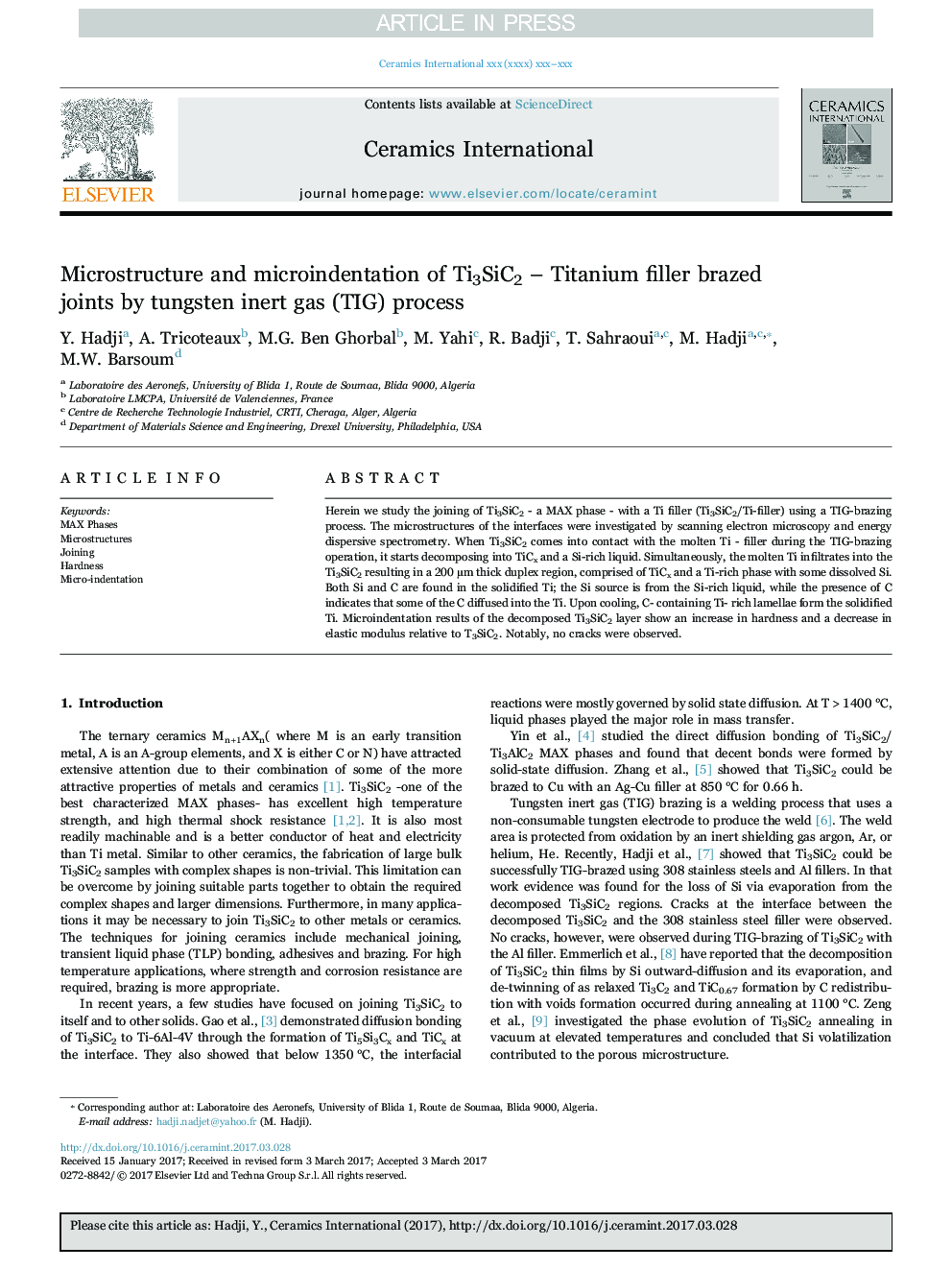| Article ID | Journal | Published Year | Pages | File Type |
|---|---|---|---|---|
| 5437983 | Ceramics International | 2017 | 5 Pages |
Abstract
Herein we study the joining of Ti3SiC2 - a MAX phase - with a Ti filler (Ti3SiC2/Ti-filler) using a TIG-brazing process. The microstructures of the interfaces were investigated by scanning electron microscopy and energy dispersive spectrometry. When Ti3SiC2 comes into contact with the molten Ti - filler during the TIG-brazing operation, it starts decomposing into TiCx and a Si-rich liquid. Simultaneously, the molten Ti infiltrates into the Ti3SiC2 resulting in a 200 µm thick duplex region, comprised of TiCx and a Ti-rich phase with some dissolved Si. Both Si and C are found in the solidified Ti; the Si source is from the Si-rich liquid, while the presence of C indicates that some of the C diffused into the Ti. Upon cooling, C- containing Ti- rich lamellae form the solidified Ti. Microindentation results of the decomposed Ti3SiC2 layer show an increase in hardness and a decrease in elastic modulus relative to T3SiC2. Notably, no cracks were observed.
Related Topics
Physical Sciences and Engineering
Materials Science
Ceramics and Composites
Authors
Y. Hadji, A. Tricoteaux, M.G. Ben Ghorbal, M. Yahi, R. Badji, T. Sahraoui, M. Hadji, M.W. Barsoum,
